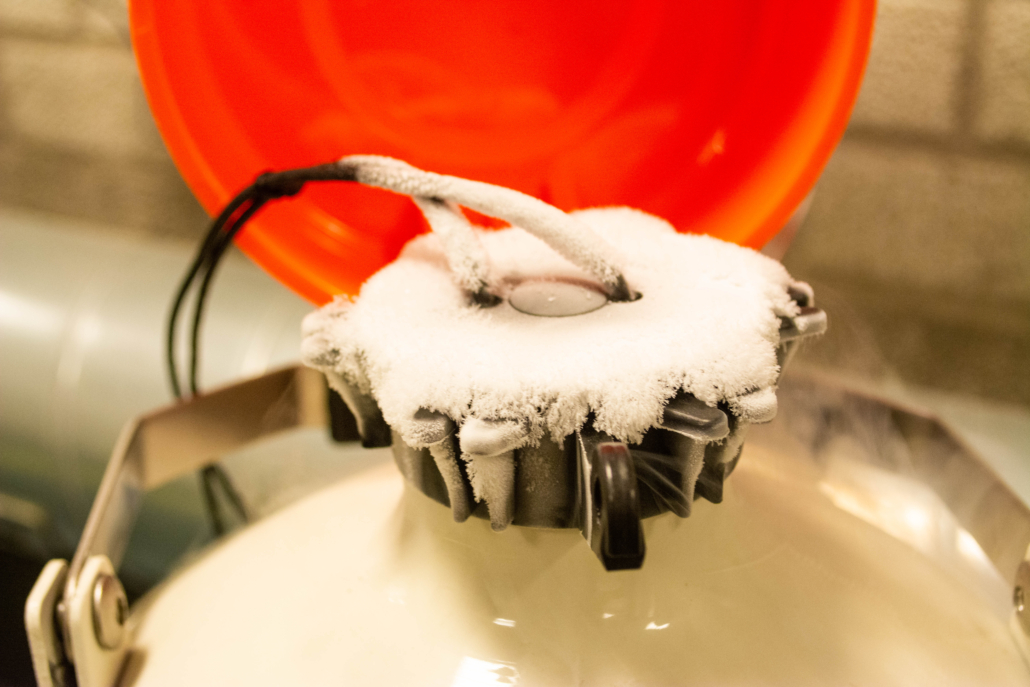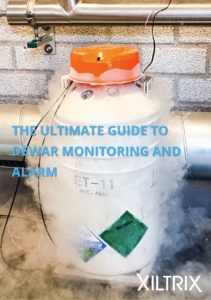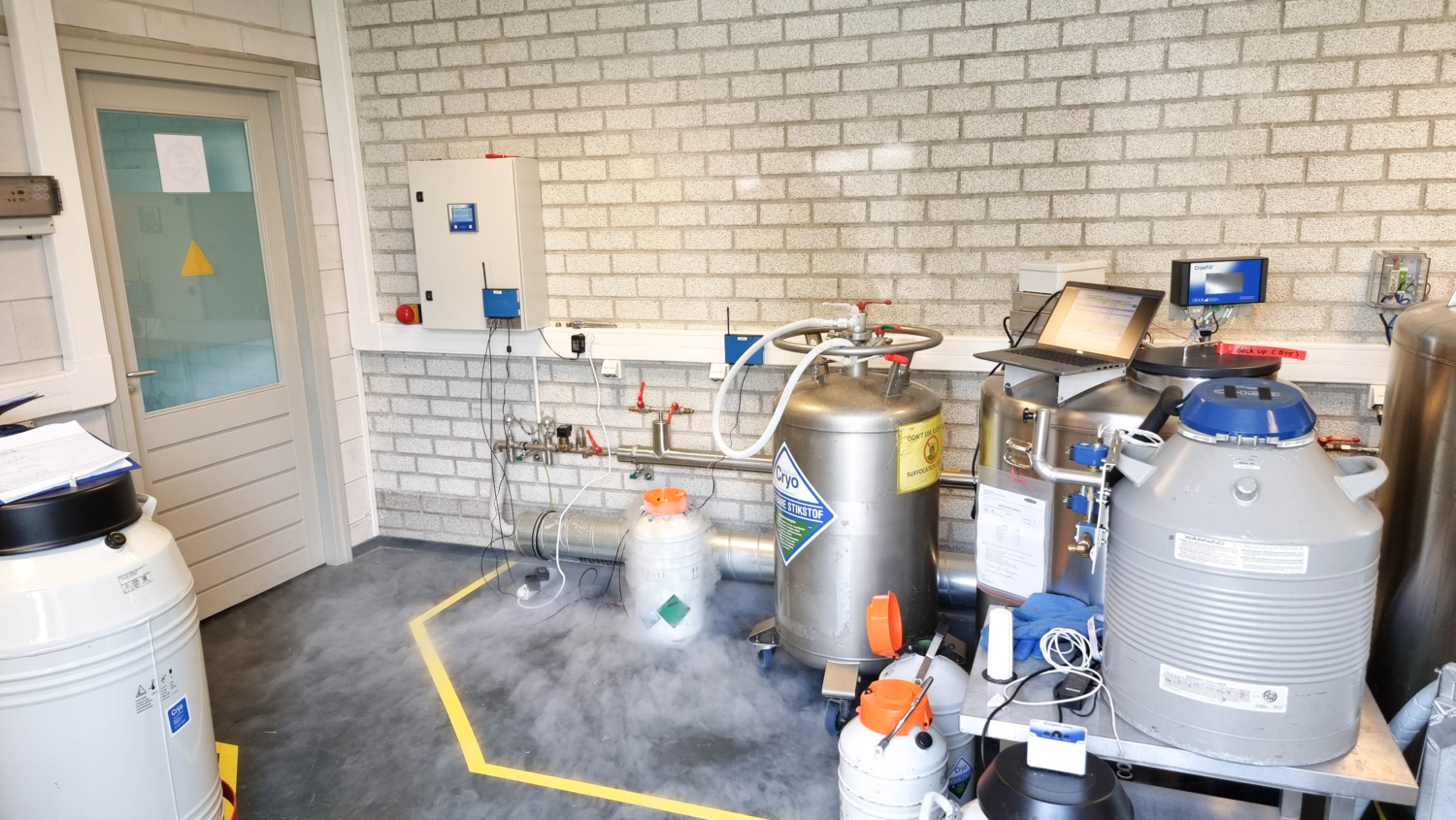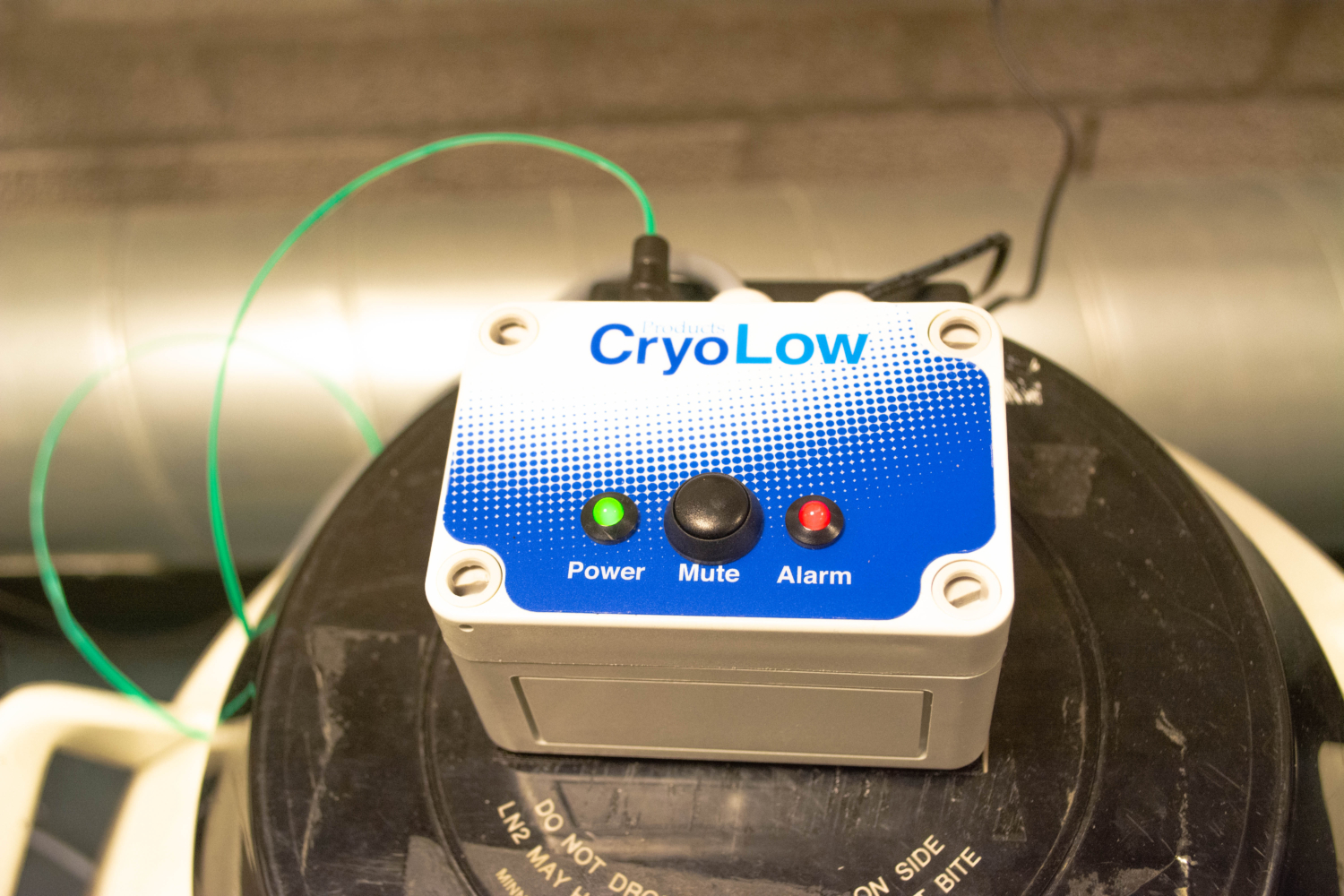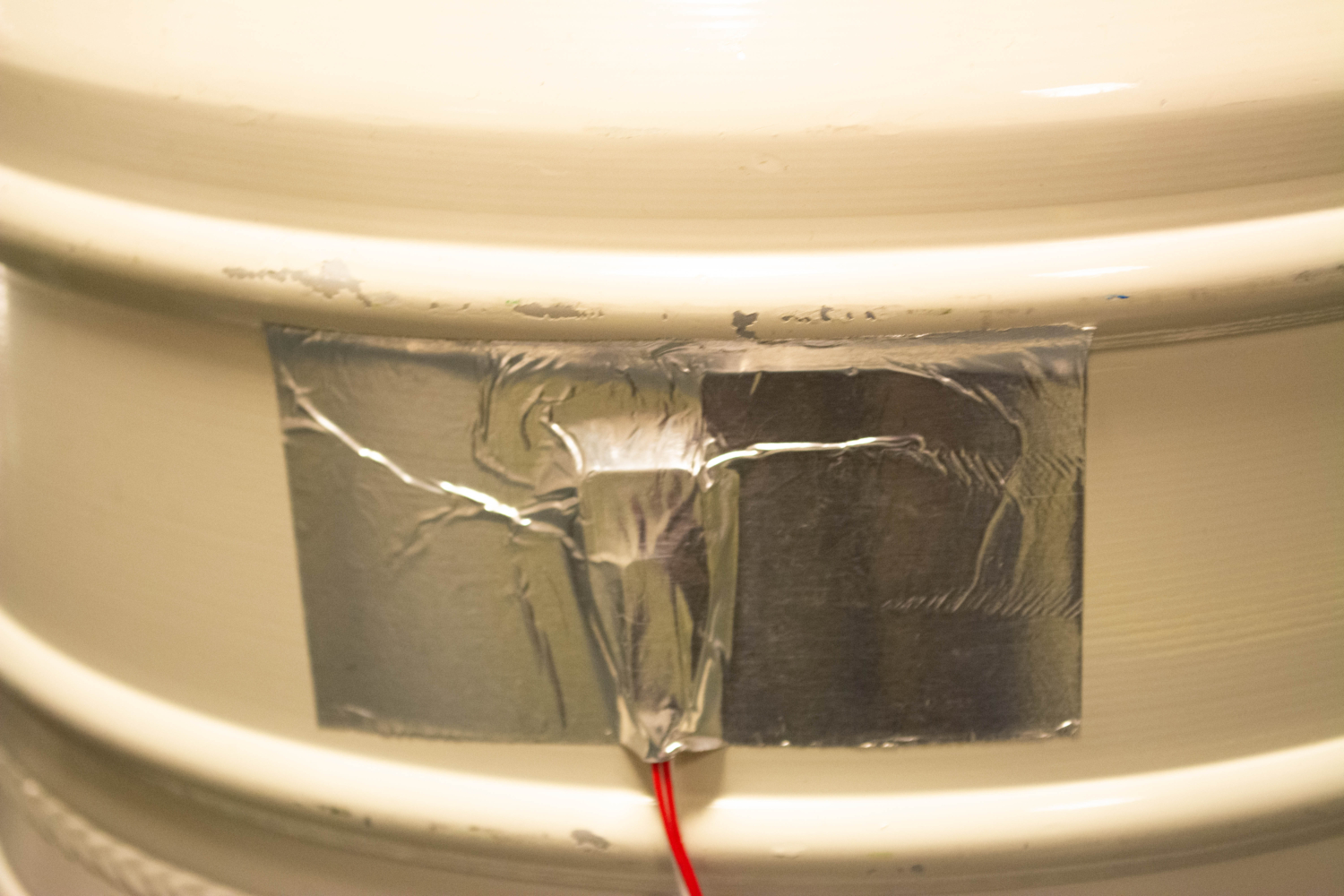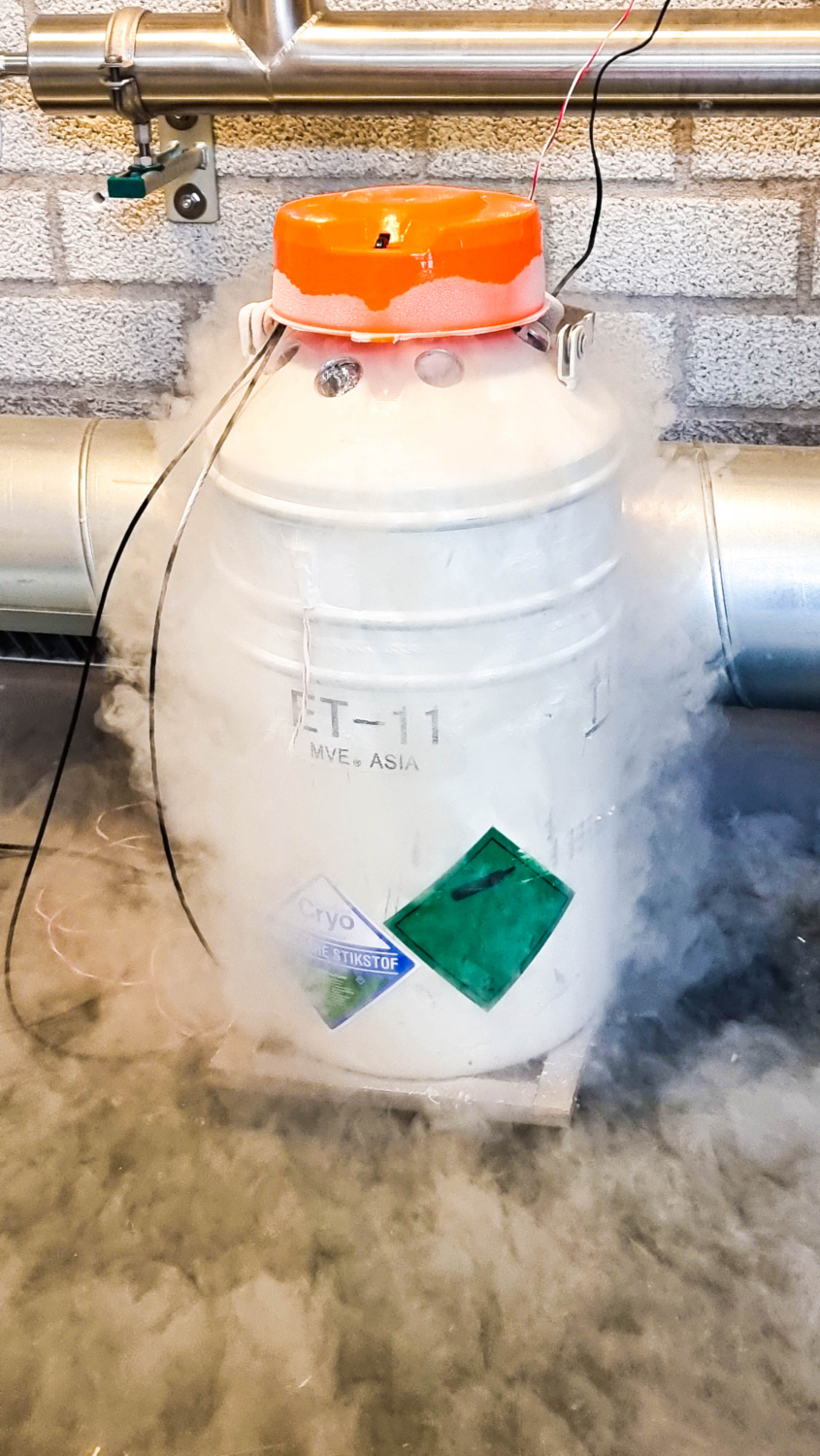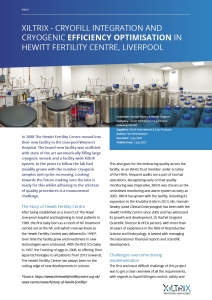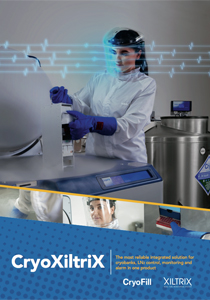White Paper – Ultimate Guide to Dewar Monitoring and Alarm
Central question: How to properly monitor liquid Nitrogen filled dewars, detect issues and send out alarms to prevent damage to the stored samples.
Introduction
Liquid Nitrogen filled cryo storage dewars are the standard for long term tissue storage in many laboratories. Tissues may vary from cord blood to human eggs, embryos or even stem cells, all of which represent a great financial as well as irreplaceability value. These samples need to be kept at a very low temperature to stop biological processes and essentially freeze the tissues in time. The liquid Nitrogen continually evaporates from the dewars lowering the liquid level in the vessel. The dewars are therefore (manually) filled frequently to prevent the liquid from evaporating completely. The temperature of the dewar will only remain low if liquid Nitrogen is inside the vessel. After the liquid Nitrogen has fully evaporated, the temperature will start rising quickly. If the temperature of the storage vessel rises above a critical temperature, tissues inside will incur viability damage or will simply perish.
Storage risks
Labs using a quality management system, work with a risk-based approach. This means the risks of operating dewars and liquid Nitrogen need to be mapped together with the consequences of the risks. If the risks are great and consequences dire, a mitigation measure will have to be implemented. This white paper will focus on a number of key questions.
- What can go wrong with a dewar from a user perspective?
- How to accurately measure liquid Nitrogen in a dewar?
- What can go wrong with a dewar from a technical perspective?
- How can all these risks be monitored with high accuracy giving the user time to respond and prevent damage?
How does a dewar work?
A dewar is in essence a very well insulated thermos flask. The inner tank holds the liquid Nitrogen which, in its liquid form, has a temperature of approximately -196°C, depending on atmospheric pressure. If the liquid Nitrogen was to be poured in an uninsulated vessel, it would evaporate in no-time. Therefore, the inner dewar is wrapped in many layers of an aluminium insulating material. This insulated dewar is then placed inside a larger tank with spacers to prevent touching of the two tanks with a material meant to prevent a further transfer of heat.
After completely sealing the space between the outer and inner tanks, the outer tank is pulled to a vacuum to remove all air from the double walled chamber. This final step eliminates air that can carry heat from the outside to the inside of the dewar which would speed up the evaporation process (vacuum insulation).
The assumption of many labs is that the temperature inside the dewar is exactly -196°C across the dewar (top and bottom) and that the temperature change will be equal with or without liquid. This is not true; Firstly, the temperature in the dewar is not exactly -196°C across the dewar (something we will demonstrate later). Secondly, the temperature inside the dewar will hold steady for a very long time, only to rise very fast after all liquid has evaporated. This second fact is often overlooked when looking for a monitoring and alarm solution. When the liquid Nitrogen is gone, the time reaction for the user is often so short, with delay times of an alarm and travel time to the lab taken into account, they will be too late to prevent viability damage to the samples…….
Download Ultimate Guide to Dewar Monitoring and Alarm
A full version of this article can be downloaded by THIS DOWNLOAD LINK. Or click the link next to this article.
Acknowledgements: I would like to extend my gratitude to the good people of Cryo Solutions in Rosmalen, The Netherlands. First of all, I would like to thank David Vaessen for his help and knowledge in setting up and performing these tests. Without you this paper would not have been possible. Second, I would like to thank Richard van Woerden for allowing us to use your company, cryo room and dewars to perform these tests. Finally, last but not least, thank you Dr Christine Allen for helping me discuss scientific ideas. Adding the neck puncture test added completeness to this piece.
We hope that our information will help to make long term cryo storage in dewars a little safer and prevent unnecessary loss of tissue or even life.
Han Weerdesteyn, CCO, XiltriX International
If you would like to know more about XiltriX, let me know.
Han Weerdesteyn
CCO

